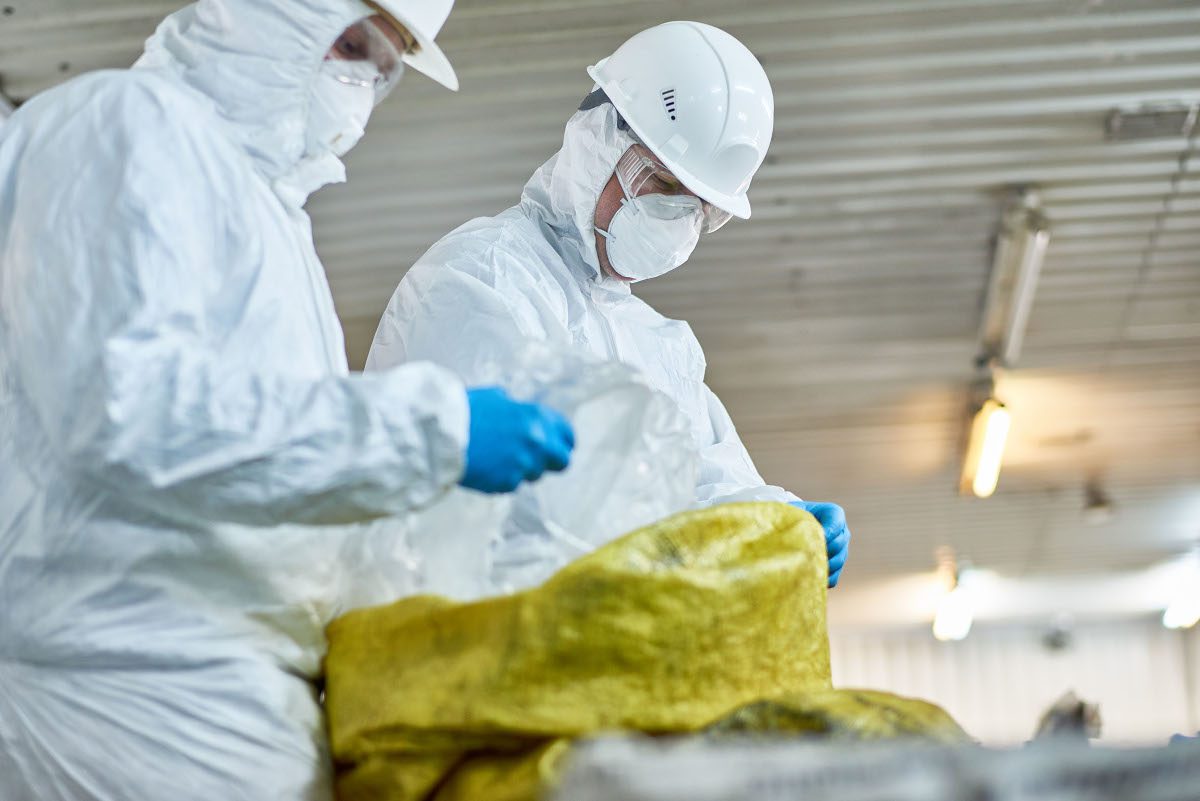
The European Court of Auditors (ECA) has released a Review on the EU actions required to address the increasing amount of hazardous waste. The Review appears to shed light on existing and future challenges in dealing with hazardous waste, including improving classification, ensuring traceability, increasing recycling, and combating illegal trafficking.
Claudia Mensi of the European Federation of Waste Management and Environmental Services (FEAD) welcomed its call for “improving recycling technologies and capacities to tackle increasing amounts of hazardous waste and to support the EU’s strategic autonomy,” adding that “correct classification, incentives for (separate) waste collection and improved processing of data are crucial.”
“The European waste industry is at the forefront of innovation, safety, and environmentally sound management practices, and we work every day to achieve the best results.”
FEAD makes the following observations to the ECA Review:
- The increase of hazardous waste generation goes generally hand in hand with the development of the real gross domestic product. In addition, the development of waste management legislation, improved reporting, and the introduction of new hazard properties and hazard classes, have led to more waste classified as hazardous over the years, which explains a higher increase of hazardous waste in relation to the total waste. Moreover, the current trends of urbanisation, digitalisation and electrification of our industries and societies will continue to increase the amounts of hazardous waste.
- Economic operators can prevent the production of hazardous waste by changing the way they design and manufacture products. To achieve a real transition to a circular economy, all products must be designed and manufactured maximising recyclability and taking into consideration the aspects of waste management and the subsequent valorisation of recycled materials. FEAD supports ecodesign requirements that strive for true dismantlability and recyclability of products through targets and use of mandatory standards for products, including as much as possible recycled materials, and reducing or phasing out harmful chemical substances. Nevertheless, even when some substances are banned or strongly restricted in manufacturing processes, they will still be present in waste, also after many years, depending on the products’ life cycle.
- The Review notes that classifying and tracing hazardous waste properly could help to avoid improper treatment and illegal shortcuts, and notes that hazardous waste is classified differently in different Member States. FEAD emphasises that correct classification is key for a proper waste management and underlines the need to step up efforts to harmonise applicable EU legislation. The obligations and conditions waste managers face in each Member State currently vary, contributing to an uneven playing field in different aspects (e.g. competition faced between operators, severity of enforcement, waste categories, registration requirements, storage and collection methods etc.).
- FEAD has strongly promoted the implementation of digital means, especially in relation to the Waste Shipment Regulation (WSR). This increases the efficiency and the transparency of the procedures and enables a better traceability. To be able to apply the best waste management treatment, information on substances of concern is essential. Therefore, any product placed on the EU market must be accompanied by a full disclosure of such information and a statement on how the product can (and should) be safely treated at its end-of-life. FEAD advocates for the role of waste managers to be sufficiently considered in the new Ecodesign for Sustainable Products Regulation (ESPR) when it comes to the information requirements to be disclosed and the access to the Digital Product Passport. Nevertheless, considering the current experiences with the SCIP database, digital tools that are in principle positive and useful also need to be practical to use, taking into account the waste management reality that handles big tonnages in bulk and where a waste stream is composed of different types of products.
- The Review considers that the ban on all intra and extra-EU shipments of waste for disposal, which the Commission proposed in 2021, could further contribute to limiting illegal trafficking of hazardous waste. As explained in the Review, waste trafficking generally means misclassifications (as non-hazardous or used goods) or illegal dilution and dumping of waste. These practices undermine legal operators and mainly affect specific waste streams, such as end-of-life vehicles and WEEE, whereas most industrial waste is adequately classified and safely treated according to its characteristics. FEAD considers that these issues will not be solely solved with the proposed shipment bans. Better control, traceability, enforcement measures and cooperation between Member States are needed. Especially in case of hazardous waste, the impact of misclassification and mismanagement needs to be strongly considered. In the EU single market there is a well-established network of highly specilised facilities to which shipments must be enabled, including for disposal when there are no capacities or adequate technologies at national level (this is particularly the case for small Member States).
- To incentivise and improve recycling of waste oils, FEAD advocates for collection and regeneration targets, whereas further measures are needed to create and ensure a strong and stable demand for such regenerated oils. In particular situations, where the presence or distance of a re-refinery is a barrier to recycling waste oils, economic incentives could take over to offset the competitiveness of alternative incineration.
- Disposal figures are high for hazardous waste, but it must be noted that the main objective when treating it, is to eliminate risks for human health and the environment, which means that disposal activities are relevant and even mandatory in certain cases. The figures[1] do not show a huge disproportion in relation to the overall waste statistics, where disposal rates in 2020 amount to 40.9% for all wastes and 53.3% in case of hazardous waste. The recycling data for hazardous waste equals the overall recycling rate (38.5% for hazardous waste and 39.9% for all wastes). Nevertheless, funding projects can help to develop recycling and decontamination technologies for hazardous waste streams and CRM that are currently technically impossible to recycle on a large scale or in an economically viable way. The EU Taxonomy is also key to develop recycling technologies for hazardous waste as well as incineration capacities for non-recyclable hazardous waste.
In conclusion, FEAD said it “welcomes the Review from the European Court of Auditors and highlights the need for a specialised industry to manage hazardous waste, the need to improve recycling technologies and capacities, as well as the importance of classification rules and their harmonisation.”
Luis Palomino, Chair of FEAD’s Hazardous Waste Committee said:
“Classification is a matter of safety for our plants. Hazardous waste cannot be a black box and we need to know from the producer what is in the waste to treat it safely, which is the main objective of hazardous waste management.”
Notes
[1] Eurostat, Waste Statistics






